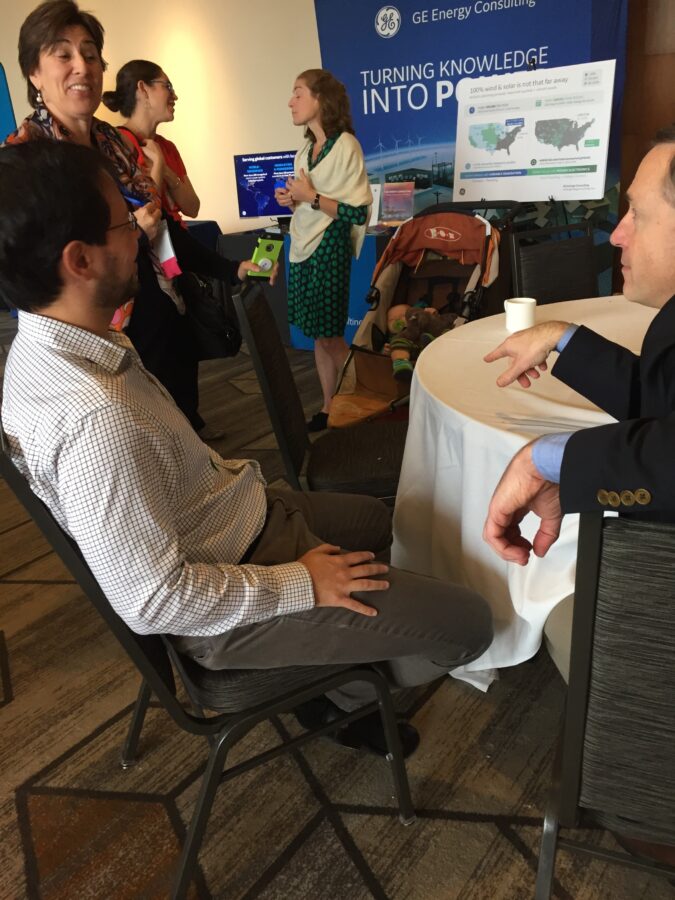Active public policy to support the broader economic well-being is a hallmark of democracies and modern economies. Everyone will suffer greatly from sea-level rise and climate change if policymakers cede decision-making to corporate interests.
In the electric utility industry, this conflict is on display in the debate over who makes decisions on new electric transmission and how to include policies set by state laws.
Because new transmission investments are widely needed for economic growth and decarbonization, attitudes among the central players in the electric power industry are changing. Leaders of states, regulatory agencies and grid planning bodies are motivated by what they are seeing and realizing they must act. But what action they take depends on where they stand in the industry.
State governments and industry plan the grid differently
“Transmission planning is essential to delivering economic growth, electric grid reliability, and cost savings for consumers,” wrote the governors from Illinois, New Jersey, Maryland, and Pennsylvania recently in a letter to grid operator PJM calling for respect of the state and federal rules and regulations regarding grid planning. The letter, and the heart of the debate, is who should be setting the tone and direction of planning for infrastructure over the next 10-20 years? Will it be the people of the state—in this case represented by their governors and legislatures—on the frontlines of climate impacts to the grid, or the owners in the power industry who have a deep financial stake in how new transmission is integrated to the grid? PJM directs the revenues and operation of the largest fossil fuel power plant fleet (124 gigawatts), making it the largest utility in the US. PJM is also a private limited liability corporation with voting members shaping its rules and practices.
To protect its markets, PJM’s governance, their way of doing business in other words, is hostile to the involvement of state governments and state policies. Their management often points to the difficulty of resolving differences between the varying policies of the 13 states in their region, even though they manage a stakeholder process with 1,000 members who also have differences that require some resolution. PJM does not provide the states in its area with membership, representation, or a vote in their stakeholder process. They have also taken numerous explicit positions to exclude state influence over power plant additions or continued operation that it says interfere with their markets.
Bottom line: PJM doesn’t want the states, or the people, telling it what to do.
Transforming the grid takes time
Competition among energy suppliers means they must rely on the transmission system to connect customers to multiple power plants. If there isn’t access to using the transmission system, then a supplier’s customers can only get energy from the existing power plants that are already connected to the grid. When existing transmission limits new suppliers from connecting to the grid, this protects older, possibly uneconomic plants from competition, limits the growth of new supplies, and lowers the reliability of the electric system.
With access to transmission so vital to enabling competition, and because of the obvious inherent conflict of interest, the Federal Energy Regulatory Commission (FERC) issued Order 890 in 2007 and recognized that planning for transmission needs to be done separately from the owners of power plants. More than a decade since that order was issued, the utility industry is debating how this can work better. FERC started an enormous review of transmission rules three years ago, including the rules for connection of new generators and the expansion of long-distance transmission. They have since split this into two efforts and have issued two packages of rule changes: Order 2023 and Order 1920.
Physically, the transmission system includes the expansions made for new generators and the miscellaneous upgrades for long distance and reliable service. The distinctions in the existing rules between these categories of transmission are all about the process and who pays. Once built, the uses and the users of the transmission system are all intermingled. FERC acknowledges the reforms in proposed Order 2023 and Order 1920 are unfinished business; they set a conference for this September to examine planning for new generators along with the routine planning utilities do for reliability. UCS asserted from the start that strong coordination of planning and new generator connections would determine the success of these rulemakings.

PJM’s perspective must be balanced with other stakeholders’ needs
What may be less obvious to folks who don’t closely follow these federal regulatory activities is that a struggle for control is smack in the middle of these more technical debates. PJM and its transmission owners have claims to the transmission process under authority of FERC. State governments control power plant decisions and transmission construction and siting. Power plant owners argue that financial interests and existing business practices should be the preeminent concern of any grid planning. These are all important interests that must be balanced in a successful process. Planning in PJM and other grids cannot give monopoly control to a single perspective. The way forward requires recognition of this shared influence and authority.
FERC reforms define the concepts and inputs for developing future planning scenarios. Stakeholders advocates for consumer interests, and policy experts will argue about projected reliability and climate change impacts of the future electric power system and what transmission is required for that future. To date, PJM plans for future reliability have made no investment to prepare for old plants retiring or new plants to be constructed. Excluding these preparations from the planning scenarios has been consistent with an outdated and unfortunate practice of reactive responses to such changes. PJM has made it their practice to assign transmission costs to the utility customers most immediately impacted by the plant retirements or to the owner seeking to build a new plant.
PJM past practices maintained a dependence on existing, older power plants, and because of that dependence, generally higher prices were paid to those older plants. The voting members of PJM preferred this over and over again, rather than have PJM planning engineers make predictions and sometimes lengthy preparations for plant retirements before plant owners announced intentions to close old power plants. Today, this same passive protection of plant owners’ interests is seen as a threat to reliability.
Reliability of the power system due to old fossil plants retirements and new growth in electric demand is driving both FERC and PJM to emphasize planning for fossil plant retirements. PJM has twice in two years published analyses of future retirements, with projected fossil plant retirements totaling 40,000 megawatts by 2030 or 41,000 megawatts by 2035. For comparison, in 2023, 6,727 megawatts were retired. When stakeholders sit down and debate the assumptions for future scenarios, PJM’s perspective on reliability and plant retirements should and will be at the center of that discussion, as will the new supplies needed for replacement.
In its rules for scenario planning, FERC deliberately has included the need for new supply and the various public policy requirements set by states prescribing changes in energy supplies to reduce carbon and create renewables. Every state in PJM has some kind of state policy for subsidizing generation, either clean or fossil-fueled. Corporation interests, both suppliers and buyers of energy, are also acting on power plant emissions.
Opportunity for collaboration ahead
The federal and state involvement in transmission is good and necessary to counter the bias in utility stakeholder debates that do not account for all the potential beneficiaries. The state and federal government influence on transmission expansion is an adjustment to correct the assumption that the market will perfectly organize buyers and sellers, even for infrastructure assets that have 40- to 80-year lifetime and disperse benefits widely.
Everyone with a stake in this debate should be prepared to talk and to listen because transmission planning is a group activity. Important details surely will come to light in the regional planning debates, including new perspectives on the future. If energy experts from all sides and policy advocates don’t join these debates with a willingness to be flexible, to support the process, and to honestly press for progress, we together will miss a truly vital opportunity to transform the transmission system and create a grid that can meet the challenge brought on by climate change.

